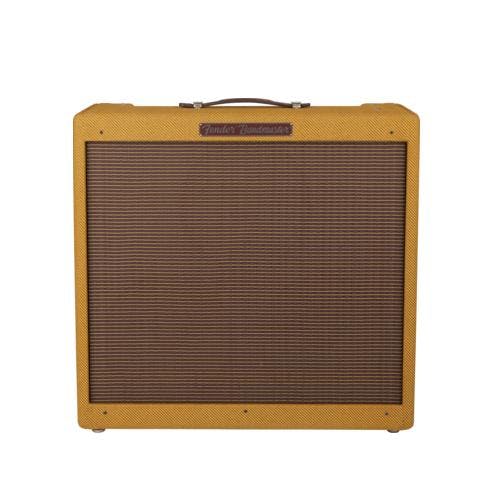

The two-knob stack IS the three-knob stack, with a fixed value for the "Mid".

And yes, the fixed value is rather low and "scooped". This applies across the whole "Blackface" Fender line from Champ-Amp to Dual Showman-Amp.
#FENDER TWEED BANDMASTER PLUS#
Fender bandmaster tweed plus#įrom Deluxe to Dual Showman, the circuits were identical up to the output tubes, plus or minus a few features - Bright Switch, "Mid" control, reverb, those are the only real differences. And of course the transformers and speakers. There may be small differences in the feedback loop around the power amp stage. But if you take a black Deluxe-Amp (non-reverb model), change the outputs from 6V6s to 6L6s, and change the power and output transformers to reflect the needs of a more powerful output section, and add "Bright" switches, you've got a Bandmaster-Amp. The Champ-Amp had the same preamp, but being a single-ended 6V6 amp, lacks a phase splitter stage. Princeton had a simpler phase splitter design.

Champ and Princeton, by the way, shared the same power transformer. And both the Princeton and Deluxe run the 6V6 output tubes at 420V B+ the difference between the 12W Princeton and the 22W Deluxe was that the smaller power transformer in the Princeton would sag under load, even though the idle voltages were the same. Of course the tone stack is lossy, it's passive. The way to boost treble in a passive circuit is to cut everything else. The "Brown" stack was different, used tapped pots in some locations, and had more forward mids. The "Tweed" voice was even more mid-forward (or less sucked.) than the "Brown". But even in the Tweed era some amps shared circuits - the Pro, Super, and Bandmaster were all the same amp with different speakers - 15", 2x10", and 3x10" respectively.


 0 kommentar(er)
0 kommentar(er)
